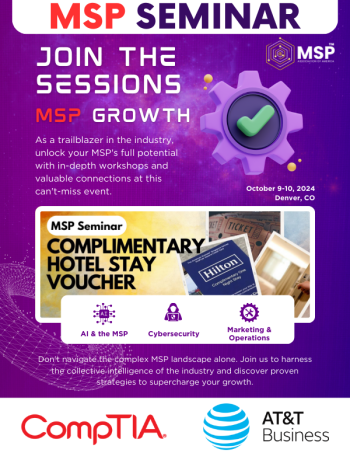In recent years, artificial intelligence has become an integral part of our everyday lives, revolutionizing various sectors, including education. Caktus AI is a noteworthy player in this evolving landscape. It offers a personalized, AI-driven learning experience that helps students optimize their learning process, understand complex concepts, and enhance their overall academic performance. In this article, we will explore
what Caktus AI is, its key features, how it works, and its potential impact on education.
Overview of Caktus AI
Caktus AI is an artificial intelligence platform designed to cater to students and educators by offering various tools aimed at enhancing learning and teaching experiences. Its core objective is to provide personalized educational support using AI, which tailors the learning experience to the specific needs of each student. This platform covers a wide range of subjects, including mathematics, science, language arts, and more.
What sets Caktus AI apart from other platforms is its AI-driven approach. The system analyzes a student's learning style, identifies their strengths and weaknesses, and then customizes the learning material to fit their unique profile. This approach makes learning more engaging and effective.
Key Features of Caktus AI
1. Personalized Learning
One of the primary features of Caktus AI is its ability to provide personalized learning experiences. By leveraging AI algorithms, Caktus adapts learning materials according to the student's needs. For instance, if a student struggles with a particular topic, the system can offer additional resources and explanations to aid understanding. Conversely, if a student excels in a specific area, the system can adjust to provide more challenging content, helping to maintain a steady pace of academic growth.
2. AI-Powered Tutoring
Caktus AI functions as a virtual tutor, offering explanations, examples, and practice questions tailored to individual students. This AI-powered tutoring system is available around the clock, enabling students to access help anytime they need it. It ensures that students can get answers to their queries promptly, without waiting for a teacher or tutor to be available.
3. Real-Time Feedback
Another critical feature of Caktus AI is the real-time feedback it provides to students. The platform analyzes students' work, identifies mistakes, and gives instant feedback on their progress. This immediate response helps students correct their errors and learn from them in real-time. The benefit of real-time feedback is that it allows students to stay on track and continuously improve their understanding of concepts.
4. Interactive Learning Tools
Caktus AI incorporates interactive tools such as quizzes, interactive exercises, and simulations to make learning more engaging. These tools are designed to enhance students' critical thinking skills while providing an immersive learning experience. Whether it’s solving complex math problems or understanding scientific phenomena, the interactive tools on Caktus AI offer students an opportunity to learn in a dynamic, hands-on way.
5. Performance Analytics
Caktus AI provides detailed analytics on students’ performance. This feature helps both students and educators track progress over time, identifying areas that require improvement. The analytics dashboard allows for a visual representation of the student’s growth, helping them stay motivated and on target with their learning objectives.
How Does Caktus AI Work?
Caktus AI operates by using advanced machine learning algorithms to analyze a student’s interactions on the platform. The AI collects data such as response times, accuracy of answers, and topics that the student engages with the most. Based on this data, the AI creates a profile of the student's learning habits and performance.
Using this profile, Caktus AI customizes lesson plans, suggesting tailored resources, practice problems, and targeted exercises to improve areas where the student may be struggling. The system also continuously adapts to changes in the student's performance, ensuring that the learning experience remains both relevant and challenging.
For teachers, Caktus AI offers a platform where they can monitor their students' progress in real-time. Educators can use this data to provide additional support, modify lesson plans, and even predict future performance based on trends highlighted by the platform.
The Impact of Caktus AI on Education
1. Enhanced Learning Efficiency
The personalized nature of Caktus AI allows students to focus on areas where they need the most improvement, thus increasing learning efficiency. Rather than following a one-size-fits-all curriculum, students can move at their own pace, ensuring that they grasp concepts fully before moving on to more advanced topics. This approach not only saves time but also ensures that learning is more effective.
2. Increased Student Engagement
The interactive and adaptive features of Caktus AI foster greater student engagement. Traditional classroom settings can sometimes struggle to keep students interested, especially if the pace of the class does not match their learning speed. Caktus AI addresses this issue by offering personalized, engaging content that keeps students motivated and invested in their education.
3. Scalability in Education
For educators, Caktus AI offers a scalable solution to personalized teaching. Teachers can monitor the progress of multiple students simultaneously without sacrificing the quality of individual attention. This scalability makes Caktus AI a valuable tool for classrooms with a large number of students, as it allows teachers to provide personalized support efficiently.
4. Bridging Educational Gaps
Caktus AI can help bridge the educational gaps that often arise due to varying levels of access to quality teaching. By offering on-demand, AI-driven tutoring, students from different backgrounds can access high-quality educational support, potentially reducing disparities in academic performance.
Conclusion
Caktus AI is revolutionizing the way students learn and how educators deliver content. With its personalized learning experiences, AI-powered tutoring, real-time feedback, and interactive tools, it provides an innovative approach to education that caters to individual needs. The platform’s ability to adapt to students' strengths and weaknesses ensures that learning is both efficient and engaging. As AI continues to evolve, platforms like Caktus AI will likely play a pivotal role in shaping the future of education, offering scalable, accessible, and personalized learning for students around the world.




